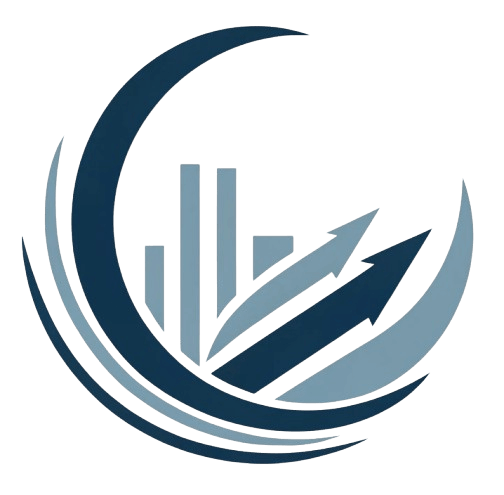Business Development Models Types and When to Use Them

Why Business Development Models Matter
Business development (BD) has evolved from a loosely defined function to a core strategic discipline. Yet, many organizations still lack clarity on how to structure their BD efforts. Should it be led internally? Outsourced? Government-backed? Or driven through academic ecosystems? The answer depends on context, strategy, and capability.
This article explores the five most common business development models, their advantages and limitations, and how institutions can choose the right one. Each model aligns with the competencies outlined in the BDA BoCK™, and is supported by real-world use cases across sectors.
1. In-House Business Development Units
In this model, BD is managed as an internal department or team within the organization. It is common in large corporations, public institutions, and non-profits with strategic mandates.
Key Features:
- Staffed with dedicated BD professionals
- Aligned directly with executive leadership
- Close to internal operations and stakeholders
Advantages:
- Strong institutional alignment
- Easier integration with strategic planning and data systems
- Greater brand and message control
Challenges:
- Risk of internal bias or bureaucratic stagnation
- Slower market feedback
Best Used When:
- The organization has scale, data access, and a long-term BD strategy
- BD is linked to core transformation or innovation goals
🔗 Related Article suggestion: How to Build a Business Development Strategy
2. Outsourced or Agency-Led BD
This model involves partnering with an external firm to execute parts of the BD process—such as lead generation, channel access, or proposal development.
Common In:
- Tech startups
- Export firms
- Regional expansion pilots
Advantages:
- Speed and agility
- Access to networks and talent not available internally
- Reduced internal burden
Challenges:
- Potential misalignment with brand or culture
- Limited internal capability development
Best Used When:
- The organization is scaling rapidly or entering new markets
- Internal BD maturity is low
3. Academic or Incubator-Based BD
Many universities, research centers, and incubators now act as BD platforms for innovation-based enterprises. This model blends academia, entrepreneurship, and ecosystem development.
Features:
- Access to youth talent, labs, and IP
- Incubation, mentorship, and seed funding
- Cross-sector collaboration (industry–academia)
Benefits:
- Promotes innovation and experimentation
- Fosters early-stage pipelines
Best Used When:
- Operating in innovation clusters
- Focus is on long-term value and capacity building
4. Government-Led or PPP Development Models
Public institutions increasingly build BD capacity to engage the private sector, attract investment, or stimulate job creation. These models work through government departments, public-private partnerships (PPP), or semi-governmental entities.
Characteristics:
- Long-term national impact
- High regulatory involvement
- Multi-stakeholder alignment
Examples:
- SME development agencies
- Export authorities
- Smart city or transformation programs
Challenges:
- Bureaucratic complexity
- Funding dependencies
Best Used When:
- BD is tied to national or regional policy outcomes
5. Multi-Lateral or Development-Funded BD
This model involves BD initiatives funded or driven by international organizations such as UNDP, World Bank, GIZ, or USAID.
Contexts:
- Fragile states
- Development zones
- Cross-border trade facilitation
Functions:
- Economic empowerment
- Entrepreneurship and MSME growth
- Institutional reform
Challenges:
- Coordination with multiple stakeholders
- Short project cycles vs long-term goals
Best Used When:
- Operating in low-resource or policy-constrained environments
- Alignment with donor priorities
6. How to Choose the Right BD Model
Choosing the right BD model requires a structured assessment of:
- Scope of Work: Internal vs External
- Speed Required: Agile vs Strategic
- Risk Appetite: Shared vs Owned
- Resource Availability: In-house capacity vs External dependency
- Strategic Alignment: Fit with organizational maturity and governance
A decision matrix or diagnostic tool can support this choice—available within the BDA BoCK™ toolkit.
7. Certification Alignment: Preparing for BD Models
BDA’s certifications prepare professionals for leadership across all five models:
- BDA Business Development Certified Professional (BDA-CP): Equips individuals to operate and contribute within in-house and partner-led BD teams.
- BDA-SCP™: Prepares senior professionals to architect and lead multi-sector BD models, including government and donor ecosystems.
🔗 Internal link suggestion: Business Development Certification Guide
Conclusion: No One-Size-Fits-All
Business development is a strategic function that must be aligned to context, resources, and ambition. Choosing the wrong model leads to fragmentation, inefficiency, and poor ROI.
At BDA, we help institutions and professionals navigate these options with clarity and precision—grounded in a global competency framework and applied in over 30 countries.
Ready to evaluate your own model? Start with the BDA BoCK™ or learn how to become a Certified Professional in BD.






Published on